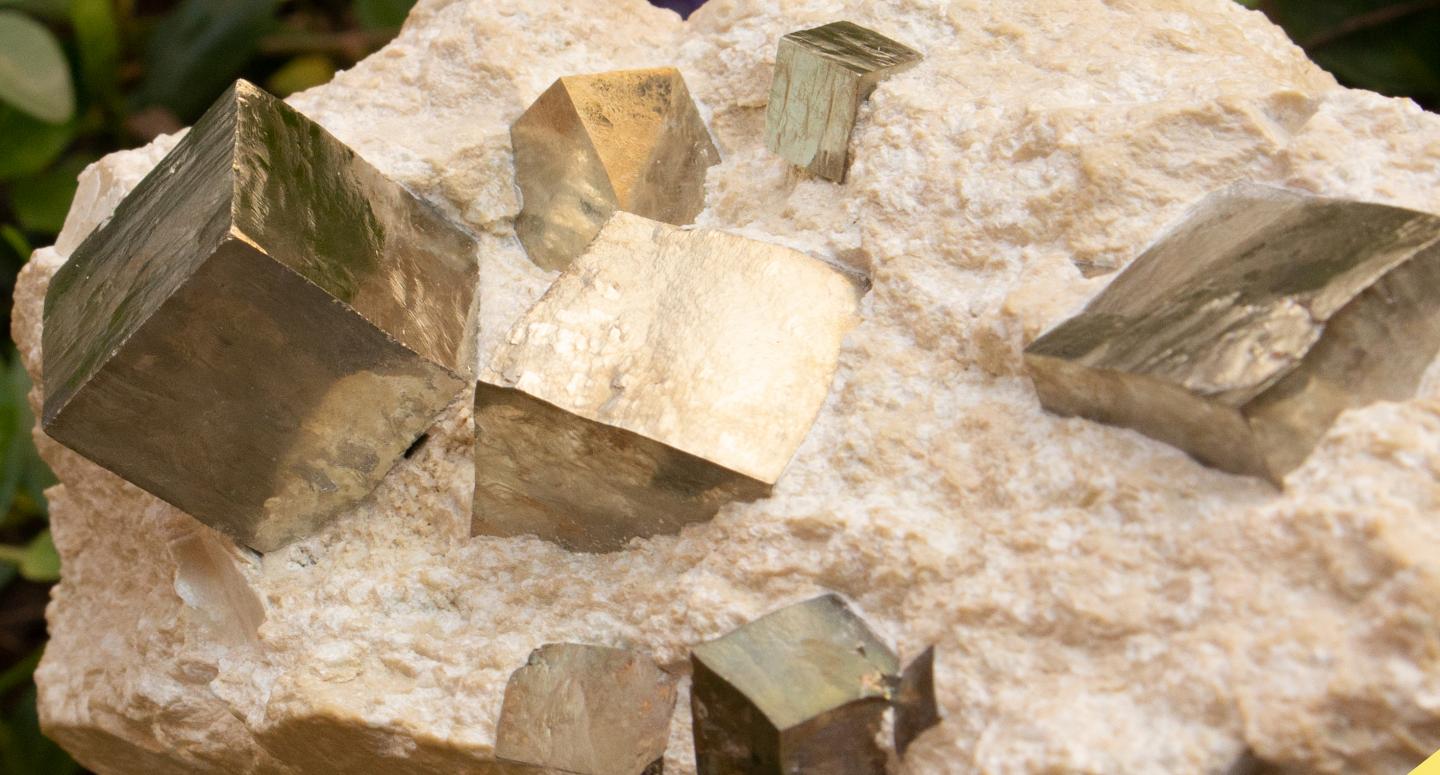Arsenic aids formation of giant gold deposits

Credit: C. Kusebauch, GFZ
The Carlin-type gold deposits in Nevada, USA, are the origin of five percent of the global production and 75 percent of the US production of gold. In these deposits, gold does not occur in the form of nuggets or veins, but is hidden – together with arsenic – in pyrite, also known as ‘fool’s gold’. A team of scientists from the Helmholtz Centre Potsdam – German Research Centre for Geosciences GFZ has now shown experimentally, for the first time, that the concentration of gold directly depends on the content of arsenic in the pyrite. The results were published in the journal Science Advances.
In the Earth’s crust, the element gold occurs in concentrations of 2.5 parts per billion (ppb). In order to mine it economically, the gold concentration must be thousands of times higher and it must be found in a focused area close to the surface. In the gold deposits of the Carlin-type, the gold in the rock is not visible to the human eye. Instead, the ‘invisible’ gold occurs in tiny pyrite rims that grow on older ‘fool’s gold’ grains which originate from sedimentary rocks.
In the laboratory experiments, the researchers around Christof Kusebauch, lead author of the study showed that the element arsenic plays the crucial role in extracting gold from hot solutions probably from magmatic systems, passing through the rock. The higher the concentration of arsenic, the more frequently gold chemically binds with pyrite. The shape of the older pyrite is also important: the larger the surface area of the mineral, the more gold can accumulate.
Arsenic indicates gold deposits
Similar to the natural ore system, the authors used iron-rich carbonates and sulfur-rich solutions to synthesize their ‘fool´s gold’ crystals. “Only then we were able to show that the partition coefficient which controls how much gold is incorporated into pyrite depends on the amount of arsenic,” says Christof Kusebauch. “The major challenge was to experimentally grow gold and arsenic bearing pyrite crystals that were big enough to analyze.”
The new findings may also help to track down new gold deposits. The experiments show that if hot solutions containing gold and arsenic from magmatic sources pass through sedimentary rocks with large amounts of small ‘fools gold’ grains present, large gold deposits can be formed.
###
Background:
What is gold? Gold is a chemical element of the copper group with the element symbol Au (from Latin: Aurum). In contrast to most other metals in nature, gold is mostly found in the pure form, meaning in the form of ‘nuggets’ composed only of one chemical substance.
In contrast, in the Carlin-type gold deposits, gold must be released from ore by chemical extraction. Here, the gold is bound to the ore mineral pyrite and has whole rock concentrations between one and tens of grams per ton of rock material (1000 to 10.000 ppb). This type of gold deposit is formed in carbonate-rich sediments. The deposits in the US formed 42 to 30 million years ago at temperatures of 150 to 250 degree Celsius and at depths of over 2000 meters, before they reached the Earth’s surface through processes of plate tectonics.
How is gold formed? On the Earth’s surface accessible to mankind, gold has been transported from the Earth’s interior to the surface by volcanic and plate tectonic processes; a small part stems from meteorite impacts. Natural processes cannot produce new gold on Earth. The heavy chemical elements in the universe, such as lead, iron, and gold, are created by the collision of neutron stars. Gold is very rare, not only on Earth but throughout the universe.
Project funding:
Helmholtz-Recruitment-Initiative to Prof. Sarah Gleeson
Original study: Kusebauch, C., Gleeson, S.A., Oelze, M., 2019. Coupled partitioning of Au and As into pyrite controls formation of giant Au deposits. Science Advances. DOI: 10.1126/sciadv.aav5891
https:/
Media Contact
Philipp Hummel
[email protected]
Related Journal Article
http://dx.




